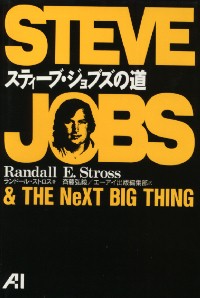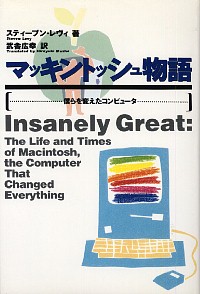
STEVE JOBS & THE NeXT BIG THING
The road of Steve Jobs
 |
NeXT was bought by Apple at February
1997 for $ 427 million.
After all, NeXT had only gained the profit of $ 1.03 million from the
revenue of $ 49.5 million in 1994, and this company which was suffering a
loss of about 50 million dollars from 1993 to the middle of 1996, assist
with the failure of Apple’s new OS development, all products, services and
technical research ware part of Apple at favorable conditions, leading to
the subsequent return of Jobs to Apple. The road of Steve Jobs, published in January 1995, by Randall E. Stross, translated by Hiroki Saito, AI Publishing, 472 pages, version A5.
|
 |
One book of a series of Masters of Invention introducing scientists,
inventors, and engineers, probably for higher grades of elementary
students.
The movements of Jobs until about
1992, or "Birth to childhood, Apple foundation and frustration, Next
company's founding and marriage" are written briefly in plain English.
Childhood is an illustration, and after the founding of Apple, a large
number of large-sized color photographs are inserted and we can enjoy
turning around the book.
Characteristic is that “Steven Jobs” unifies the name notation. |
 |
Author Steven Levy is also known as "
Hacker's " computer and
high-tech
columnist , also known as "Artificial Life"
depicting artificial intelligence research and robotics research.
This book is based on the author's article written in a magazine such as
Popular Computing, Macworld, Harper's, Rolling Stone.
INSANELY GREAT: 1994 publication,
Steven Levy, VIKING PENGUIN, 292 pages, A5 edition. INSANELY GREAT: 1995, published by Steven Levy, PENGUIN BOOKS, 312 pages, Paperback. |